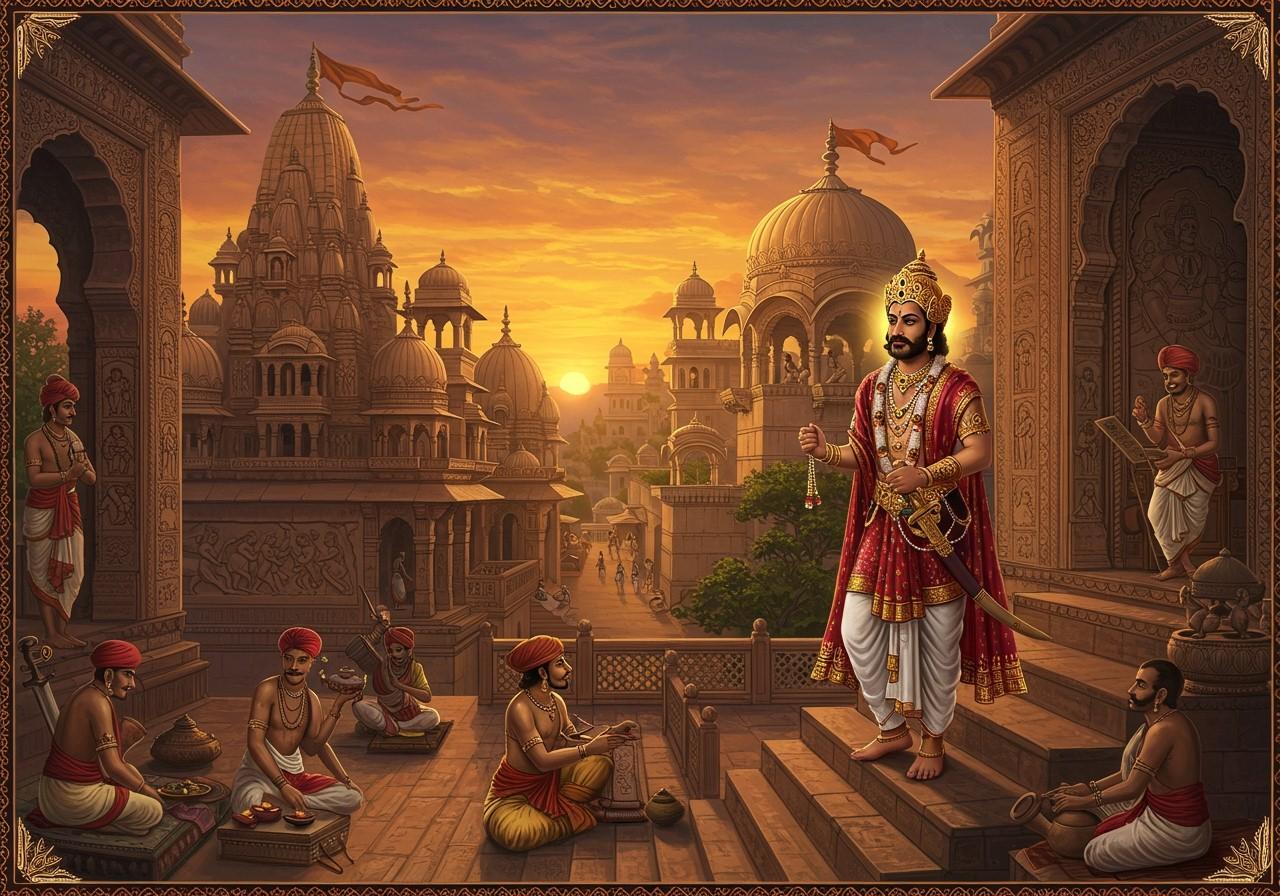
India’s history is a vibrant tapestry woven with the rise and fall of numerous kingdoms. The Varman Dynasty stands out as a significant thread, particularly in the northeast. This dynasty, ruling Kamarupa (present-day Assam) from 350 to 650 AD, left an indelible mark on the region’s cultural, political, and religious landscape. This article delves into the Varman Dynasty’s origins, prominent rulers, achievements, and enduring legacy.
Origins and Rise of the Varman Dynasty
The Varman dynasty emerged in the ancient kingdom of Kamarupa, with its capital at Pragjyotishpura. The term “Varman,” derived from Sanskrit, signifies “protector” or “shield.” Pushyavarman, a contemporary of Samudragupta, founded the dynasty around 350 AD. Initially, the Varmans were under the Gupta Empire’s influence, but as Gupta power diminished, they asserted their independence. This marked a pivotal moment, paving the way for Kamarupa’s flourishing as a sovereign entity.
Key Figures and Their Contributions
-
Pushyavarman (350-374 AD): The founder of the dynasty, Pushyavarman, solidified his rule through strategic alliances and military campaigns. His reign laid the groundwork for the kingdom’s future prosperity and expansion, establishing a strong foundation for his successors.
-
Samudravarman (374-398 AD): Succeeding Pushyavarman, Samudravarman continued the dynasty’s expansionist policies, further solidifying Kamarupa’s position in the region. His reign marked a period of continued growth and consolidation of power.
-
Bhaskaravarman (594-650 AD): Arguably the most renowned Varman ruler, Bhaskaravarman was known for his diplomatic acumen and patronage of the arts. His alliance with King Harshavardhana of North India significantly elevated Kamarupa’s political and cultural standing. Bhaskaravarman’s reign is considered a golden age for the kingdom.
Cultural and Religious Influence
The Varman rulers were devout Hindus and actively promoted Vedic traditions and rituals. Their reign saw the construction of numerous temples and religious sites, enriching the spiritual landscape of Kamarupa. Sanskrit and Kamrupi Prakrit flourished as the primary languages, facilitating intellectual and cultural exchange. The Varmans also supported artistic endeavors, contributing to a vibrant cultural atmosphere.
Decline and Enduring Legacy
Internal strife and succession disputes gradually weakened the Varman Dynasty. Coupled with external pressures and invasions, these internal conflicts led to the dynasty’s decline. Despite its eventual fall, the Varman Dynasty’s legacy remains deeply ingrained in Assam’s history and culture. Their contributions to religious practices, language, and the arts continue to resonate in the region.
Exploring the Varman Dynasty’s Legacy with Poojn.in
Poojn.in, India’s leading online store for cultural and religious goods, provides a wide selection of products that can help you connect with the spiritual heritage of the Varman Dynasty. Whether you’re seeking items for personal devotion or to enhance your understanding of ancient traditions, poojn.in offers a diverse range of authentic products.
-
Brass Diyas and Incense Holders: Illuminate your puja space with traditional brass diyas, reminiscent of those used in ancient Kamarupa. Complement the ambiance with handcrafted incense holders, creating a serene atmosphere for prayer and reflection. Find a wide variety at poojn.in.
-
Spiritual Texts and Books: Delve deeper into the religious and philosophical traditions prevalent during the Varman era with a curated selection of spiritual texts and books. Explore ancient scriptures and scholarly works to gain a richer understanding of the period’s spiritual landscape.
-
Idols and Murtis: Honor the deities revered during the Varman Dynasty with beautifully crafted idols and murtis. Poojn.in offers a wide range of divine figures, allowing you to create a personal shrine that reflects the spiritual practices of the era. For example, Lord Shiva Murti.
Visit poojn.in today to explore our complete collection and enrich your connection to India’s rich cultural heritage.
Further Exploration: Related Articles
Expand your knowledge of ancient Indian dynasties and temple architecture with these insightful articles:
- Kandariya Mahadeva Temple: Religious Importance and History
- Badami Cave Temples: Chalukya Dynasty Architecture
- Sas-Bahu Temples: A Guide to Their Architectural Wonders


